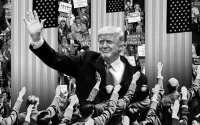24 June 2009www.newscientist.com/article/mg20227144.000-statistics-hint-at-fraud-in-iranian-election.html
ALLEGATIONS that Iran's presidential election on 12 June was rigged are being followed up by statisticians in the US and elsewhere who are studying published voting figures for signs of irregularities. They say they have found "moderately strong" evidence that the figures are not genuine, though all are careful to emphasise that maths alone can't prove fraud.
Opponents of the incumbent, Mahmoud Ahmadinejad, who was declared to have won by a landslide, have pointed to his wide margin of victory, the speed of the announcement and some unexpected results, such as Mehdi Karroubi's poor showing in his home state of Lorestan.
One suggested anomaly - that Ahmadinejad's proportion of the vote remained almost constant as the results were announced in six stages - was soon debunked by New York-based statistician and political pundit Nate Silver. He says this is not surprising when votes are reported in large slabs, and that the same effect would have occurred during last year's US presidential election if the results had been reported this way.
To dig deeper, Boudewijn Roukema of Nicolaus Copernicus University in Torun, Poland, used a mathematical tool called Benford's law. In many random sets of data, numbers are more likely to begin with 1 than any other digit. The next most frequent starting digit is 2, then 3 and so on, in a precise relationship. The law applies to any set of numbers scattered randomly on a logarithmic scale.
Any deviation from this pattern could suggest that figures have been manipulated. This has been used to uncover tax fraud and false expenses claims, and Roukema now says it points to fraud in the Iranian election. He analysed the vote counts reported for the four candidates in 366 districts. Votes for three of the candidates fit expected patterns, but Karroubi has an unexpectedly large number of counts beginning with the digit 7. The chance of such a large deviation from Benford's law happening without foul play is only 0.7 per cent, Roukema says. "The simplest interpretation would be that someone interfered in the overall counts per district."
Political scientist Walter Mebane of the University of Michigan, Ann Arbor, has found another anomaly. Based on figures from Iran's presidential election in 2005, when Karroubi was also among Ahmadinejad's rivals, he built a statistical model to predict how each would be expected to do in various districts in 2009.
The model assumes that the 2005 votes were based on regional differences in policy preferences, ethnicities and demographics that should still show up in 2009. Yet in around 200 of the 366 districts voting numbers were inconsistent with the model - and in two-thirds of these, Ahmadinejad's vote was higher than predicted. "It is moderately strong evidence in favour of the idea that there was fraud," says Mebane.
This is far from proof, however. "It is also compatible with the idea that the model is no good," Mebane admits. "I've never said that statistics alone can prove fraud." What it can do is identify places where there may be fraud, so that other investigations - such as studying the ballot papers themselves - can follow.






